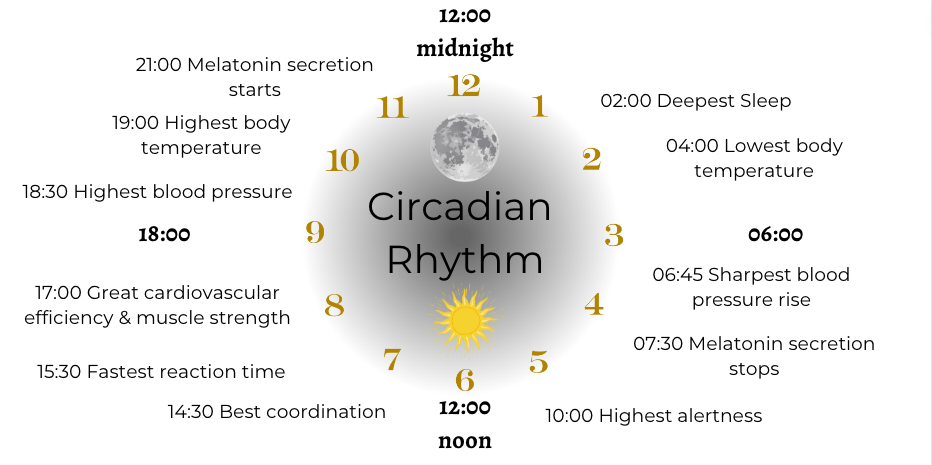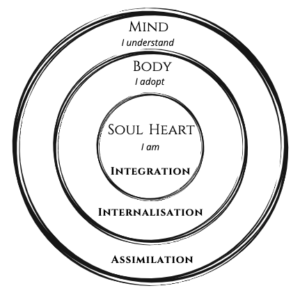
Nature’s first green is gold,
Her hardest hue to hold.
Her early leaf’s a flower;
But only so an hour.
Then leaf subsides to leaf.
So Eden sank to grief,
So dawn goes down to day.
Nothing gold can stay.
As our friend Robert Frost said in his poem: Nothing gold can stay.
But what is gold, though? If we let go of the idea that some seasons are better than others and embrace them all as equally good, important or necessary for life, growth, evolution, and learning, I’d remove “gold” from Robert Frost’s poem and say, “nothing can stay”.
Look around. Look at the places we inhabit and the calendars we pursue. How many sunsets have you lived in? How many Novembers? How many summers?
If almost nothing in our natural, animal lives is linear and happens only once, why should learning a language be?
Everything from circadian rhythm to seasonal cycles asks us to slow down and be attuned to change and cyclical repetition.
Decolonizing language learning: Slowing down
An essential part of cyclical learning is slowing down. And with slowing down, we enter yet another pillar of decolonizing work. I’m sharing in this section an article entitled “From “Slow” to “Being ‘Lazy’ and Slowing Down” and the Impact on Student Learning” by M’Balia Thomas and Marta Carvajal-Regidor.
Slowing down asks us to reject the idea of results with the passage of time. Learning and growth happen organically over time and effort, practice or dedication, but the way the results manifest themselves is different for every person and other periods of life. And that is natural.
We are already aware that the learning journey changes when we shift the focus from results to progress, but slowing down and adopting cyclical learning takes things a notch further. It means allocating time for “not-doing”, contemplation, and integration. It means providing learning opportunities that involve not only the mind but the body and the spirit too. It’s about depth over breadth.
There are two angles to cyclical learning. In this article, we are going to explore the following aspects:
- One is about when to do what.
- The other is about how to do it.
When to do what
Internal rhythms for learning
We are cyclical beings.
We have different amounts of energy at all times throughout the day, menstrual cycle, year and our lifetimes. And that means there is a time for everything, but not everything can be accomplished simultaneously, nor by mere decision ignoring our body (connected to the body of the Earth).
Our bodies and minds are subjected to a biological clock that regulates our behaviour. We have internal productivity curves, and when we ignore them or fight against them, several things happen: the product of our activity is suboptimal, so in a way is a waste of time, and also we are more prone to overwork, feeling overwhelmed and burnout.
But learning to work with your natural peaks and valleys can tell you exactly when to schedule each part of your day, month, or year!
We are not the sole masters of our time. We have families, communities, jobs and other commitments that limit our freedom to schedule our activities, but the more you know about your inner rhythms, the better you can adapt those activities to match them. In short, it allows you to perfectly line up the learning tasks (when possible) with when you’re naturally most suited to doing them.
Reflective Prompt:
When do you experience peak energy, alertness and focus during the day?
Once you identify your peak hours, schedule focused heads-down time: Meetings, 1:1, and writing/reading tasks when your energy levels are low.
Higher-stress work for when you need a boost in energy and motivation
The circadian rhythm
The first cycle that I want to mention is our 24h clock.
All of us have experienced highs and lows in our energy throughout the day. Researchers call this our Circadian Rhythm—a 24-hour internal clock running in the background of your brain that cycles between alertness and sleepiness.
Every person’s rhythm is slightly different, but most follow a similar pattern.
After waking up and breaking out of our sleep inertia, our energy levels naturally rise. By around 10 am, we’ve hit our peak concentration levels that continue until a natural post-lunch energy drop between 1-3 pm.
In the afternoon, our energy levels rise again until falling off again sometime between 9–11 pm when most of us go to bed.
This probably sounds natural to you (and close to how you experience your energy levels throughout the day). However, there are other cycles we go through during the day.

Reflective prompt:
Considering this information, how would you organize your learning or work-related activities (if you are a self-employed language teacher) or encourage your learners to manage their learning?
Often our learners can’t always choose when to book a class with us because their decision is limited by work or family needs. However, our work is far beyond the 1:1 time that we share. Therefore, we can invite them to explore what kind of activities could be better depending on the energetical moment they are in when they are present in class with us or when they are doing practice or learning activities.
It’s about bringing awareness to our and their inner daily cycles and working with them instead of ignoring them.
Infradian Rhythms
The 24h cycle is one of many cycles that impact humans. Longer cycles like the seasons and the menstrual cycle are bodily cycles that belong to infradian rhythms.
In this article, we are only going to focus on the seasonal cycles (this article addressed the menstrual cycle for language learners )
The seasonal cycles
The next cycle we need to pay attention to is the seasons.
Along with the circadian rhythm, the seasons, moon and menstrual cycle influence our bodies. These cycles may feel more subtle if we have never tracked them, but we are familiar with SAD, winter blues, or even the full moon affecting our sleep.
So, these bigger cycles also need to be included in the learning journey.
Reflective Prompts:
What kind of activities can be done in the summertime when the energy is higher, we may feel more extroverted, or we may feel we can take more on top of work?
What do we do in winter when the days are shorter, and energy levels are lower? This may be the time of resting, not doing and allowing for integration.
In the same way that the planet Earth we inhabit and come from goes through seasons and what occurs in every season is different. We, humans, go through seasons, and different things happen during those seasons.
The role of integration: Time to not-doing. Stillness.
In the same way that we understand that our learning takes ground in our brains during sleep time, we need rest and allow for integration. We shouldn’t encourage our learners not to have “holidays” from learning.
How to do it: depth over breadth and immersive language learning
Going in circles. Spiral Learning
As we mentioned at the beginning, cyclical learning means slowing down and adopting a slow learning approach for the learner and, for language teachers, a slow teaching approach.
It’s also about depth, not breadth.
Deep dives
As language teachers, one of the things that we can do is to allow the student to immerse in a topic way beyond their “level”. When we are talking grammar, it means exposing them to all the complexity and nuance of this specific point and not drip-feeding them like many textbooks or traditional language learning methods.
And sitting with stillness.
And slowing down, inviting the learner to be with that specific point for a “season”, giving it winter, spring, summer and autumn phases, where there is reflection, adoption, play and contemplation—also, allowing times of nothing at all.
Slowing down to understand better.
In my book Weaving Words: The Alchemy of Languages, I talk about the three phases of learning.

These three phases (assimilation, internalization and integration) repeat themselves with every new thing presented to the learner, being a theme, function or grammar point.
As you can see in the image above, the integration phase is the deepest one, which occurs at the soul/heart level. Integration happens when we reach the “unconscious competence” level.
Instead of racing through the material at fast speed, we look “closely – and by extension, slowly” at one aspect of the program, be it a text or idea, for a period of x amount of weeks, I tend to suggest a month or 28 days as a guide.
As language teachers and coaches, we can bring embodied, relational, and spiritual ways into our classes or language coaching session through different practices and rituals that help the learner anchor themselves and the language in their lives in a meaningful way.
Sign up for more deep dives on education, language learning and edupreneurship in this newsletter. >>> SIGN UP
______________
La formación de Embodied Language Coach Training – 2023 (formerly called Language teacher & Coach training + mentoring) is open for enrolment. If you are considering upgrading and developing your language teaching skills, have a look at the training.


